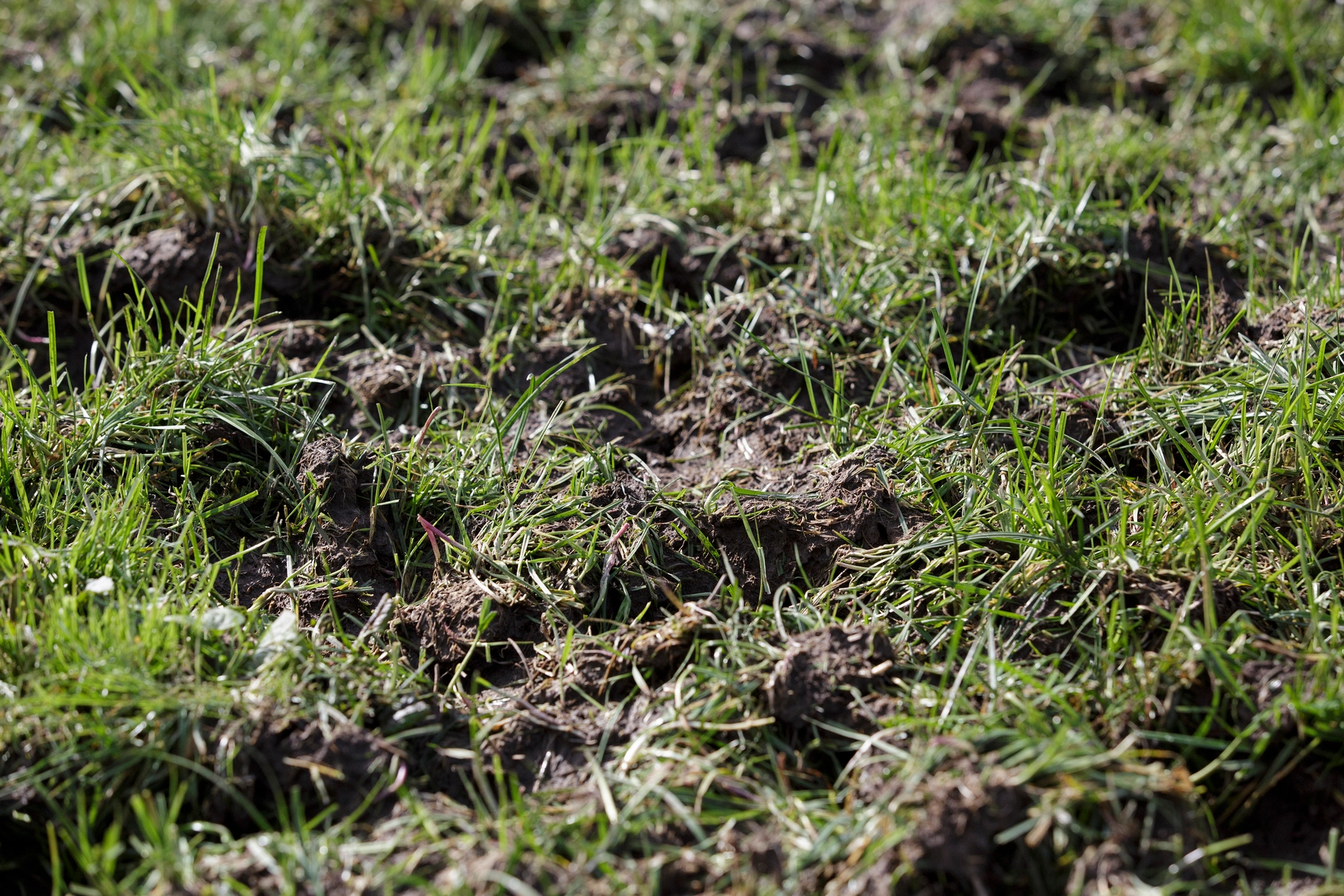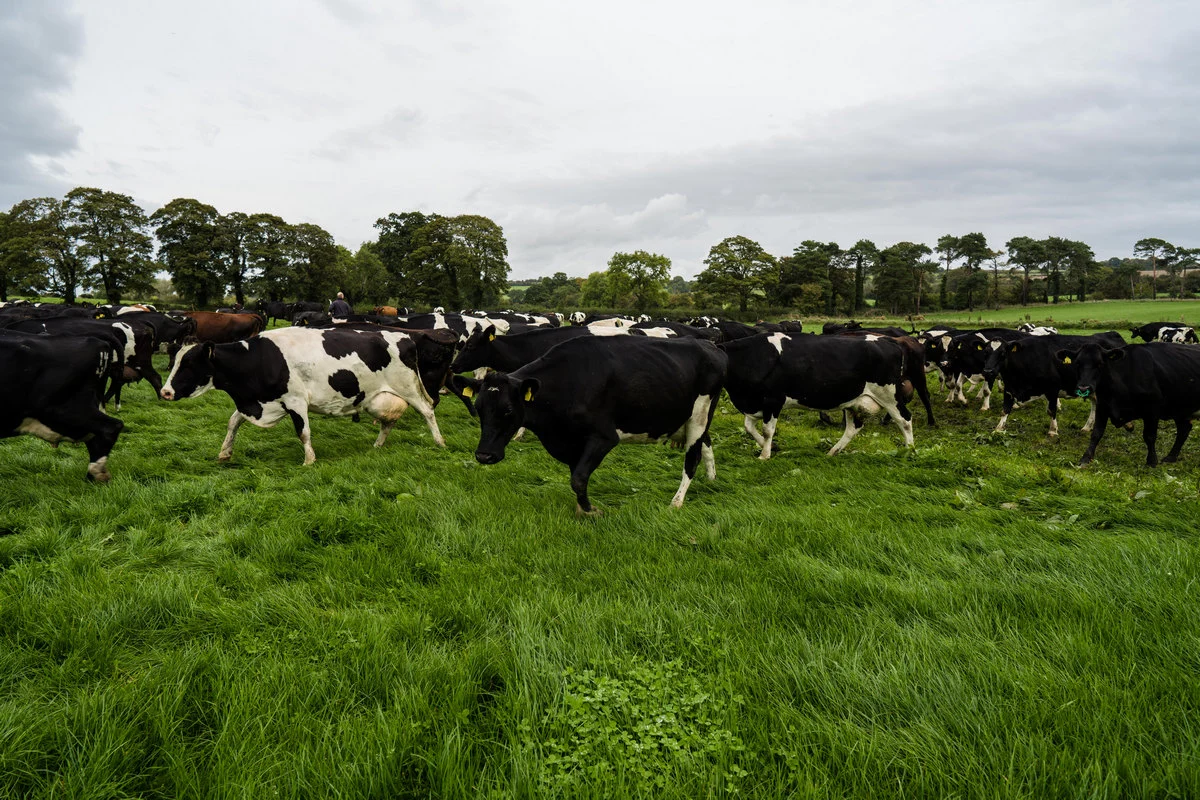Having one eye on the weather forecast is part and parcel of farming, but stormy weather can impact suddenly, with flooded fields causing major damage. While we can’t control the weather, there are measures that can help you get going again and mitigate future flood damage, explains grassland expert Paul Morgan.
Farming in wet conditions
Extreme weather is an ever-present concern for farmers, who can potentially go from drought conditions in summer straight into a turbulent storm season.
Since September 2023, there have been 11 named storms across the British Isles. This is the most since the 2015/16 storm season when 11 storms were named. Farmers will also remember 2013/14 as being extremely disruptive, though storms weren’t yet named back then.
Flooding advice for farmers
Once a rainstorm has struck, wait for water to recede from flooded fields before you assess the damage. If surface water remains in flooded grassland, then soil compaction is likely the issue and drainage can be improved.
Improve field drainage
You can start by digging holes to assess. If the compaction is within six inches of the surface, then aeration could be the solution. However, if the compaction is lying deeper than six inches, then ploughing, mole ploughing or sward lifting can break up the soil pan.
While breaking up compaction will improve drainage, a longer-term solution is to install a drainage system using deep open drains or underground pipes. When drainage is improved, this helps future floodwater drain away quicker while also reducing soil damage, run-off, and nutrient leaching.
Build grassland infrastructure
Where possible, it makes sense to build or maintain farm roadways to ensure that livestock, vehicles and machinery are not worsening any existing poaching.

In terms of access, aim for at least two entry points. If possible, these should also be maximised to avoid bottlenecks that can overload access points and further damage fields. Providing multiple water sources in a grazing area will also help mitigate poaching.
Restore nutrients in grass
When surface water has cleared from flooded fields, check if your swards have survived. While grass has the potential to survive for up to 21 days, it could be stressed. When grass goes longer without oxygen, the roots rot and the plant dies.
At this point, a soil test would make sense to determine if nutrients have leached. If needed, NPK with sulphur can be applied, but wait for drier weather to minimise the risk of runoff.
Unfortunately, if swards have died, then adding nutrients will not help and a full reseed will be required. If you are only seeing patches of dead grass, then overseeding can work.
Managing grazing in wet conditions
Once satisfied with nutrient levels, walk the fields to ensure that the ground has firmed up – your feet should not be sinking into the soil.

Start by introducing young stock or sheep in four-hour blocks to see if the ground holds. If all is well, you can introduce heavier stock in other fields, also in four-hour blocks. When you are satisfied that normality has resumed, you can move stock every 12 hours.
Reseeding with diploids and tetraploids
While tetraploid ryegrasses produce upright leaves that are easy to graze, their open growth habit means swards are vulnerable to weed ingress and poaching.
This is why Germinal often recommends reseeding with a balanced mixture of tetraploids and diploids, which can both be productive. While AberGain is our highest-yielding tetraploid variety with 106t DM/ha, AberSevern is the leading diploid at 111t DM/ha and is new for 2024.
Diploid ryegrasses create denser swards and offer superior ground cover, helping to prevent poaching in wet pasture and lowering the threat of weed ingress. If weeds become an issue in flood-risk fields, then this must be addressed. View our Grassland weed control guide for detailed management advice.
When sowing windows are short, try a quicker reseeding method such as direct drilling, which minimises soil disturbance. Wet pasture is at high risk of damage and direct drilling will reduce machinery passes.
When you first graze new leys, start with lighter stock as the surface might still be too weak to cope with heavier stock.
Get advice on flooded fields
Contact us below to discuss grassland management and mixture options to mitigate the future impact of flooded farmland.
